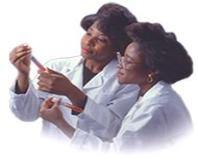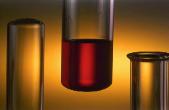 |
Let's review two simple concepts in lay terms to better explain our
objectives. One is bioprospecting and the other is protein
purification.
We've explained elsewhere on this site that bioprospecting is the
search for new chemicals in living things that will have some medical
or commercial use. While it is a high risk area for investors, it can have
massive returns. Since the 1990s, of the world's 25 best-selling
pharmaceuticals, approximately 40% were originally sourced from
animals, plants or micro-organisms. Since 2000, these have
accounted for tens of billions of dollars in global sales.
How does it work? Frequently, scientists identify a need for a certain
chemical, and specifically look for it
in nature. Just as often, however,
a scientist performing a strictly
academic research project suddenly
notices a valuable use for what
started as curiosity-driven research.
This is the "Eureka!" event, for ex-
ample, experienced by a researcher
who accidentally discovered new
kinds of antibiotics while studying
frogs. One scientist might look in
microorganisms for new cancer- fighting drugs. Another may be
investigating how microorganisms live and accidentally discover how
they protect themselves from something like cancer. Even scientists
themselves can be surprised by who makes the next "accidental"
discovery.
A key aspect of bioprospecting is protein purification. Protein
purification is the process of separating a specific protein from all
others in a cell.
Proteins are long chains of acid links that are used as the building
blocks of cells, and thus all living things. Many biotech companies are
based on the use of natural or genetically engineered proteins to
produce vaccines, hormones, therapeutic drugs, pesticides and a host
of other medicinal and commercial products. If one isolates a protein
with certain properties then they can mass produce it through various
means, and sell it if it solves a particular problem. Of course,
depending on its purpose and effect, many things have to happen
between isolation and verification of a protein's effects, and actual
commercial distribution. These may include lengthy and expensive
clinical trials and obtaining governmental regulatory approvals.
Regardless, the point is that the process is well-established and
involves known steps.
| Legal Statement -Terms of Use Contact Webmaster Copyright 2012. DeoBioSciences, Inc. All rights reserved. |
Site Word Search
DeoBioSciences is at a critical juncture in the development process of its lead candidate, DBX-31. We have taken a naturally derived protein, and demonstrated carcinotoxic activity in vitro. In fact, we have confirmed high index, dose-dependent, apoptotic activity against a broad cross-section of cancer types, including metastatic secondary forms. For obvious intellectual property protection reasons, we cannot disclose details about DBX-31 here. However, the basis for DBX-31 is somewhat remarkable, as are many bioprospecting leads. But more important is the scientific support for the plausibility of DBX-31 as a broad-based cancer therapeutic. Based on the research results to-date, DeoBioSciences is ready to begin the preclinical/clinical animal R&D phase. Our research objective will be to evaluate potential clinical benefit and safety in support of an Investigational New Drug Application (IND) and New Animal Drug Application (NADA). |
If you are interested in learning more about DBS and its research opportunity, please check out the How to Contact Us section. |




|
|
|
|
|
|
|
|
|
|
|
|
|
|
|
|



|
|
|
|
| Biotech News |

